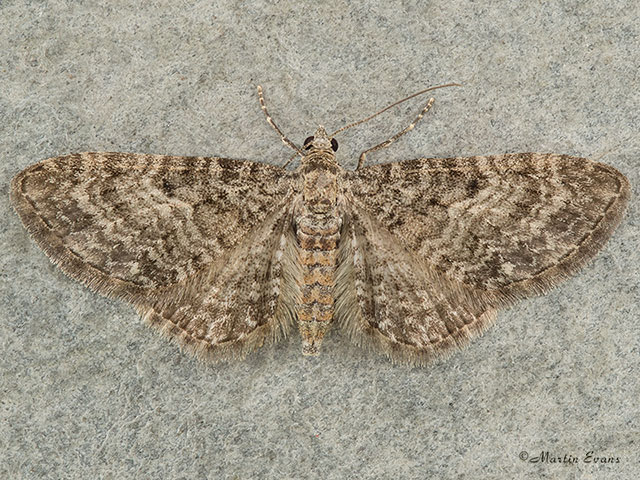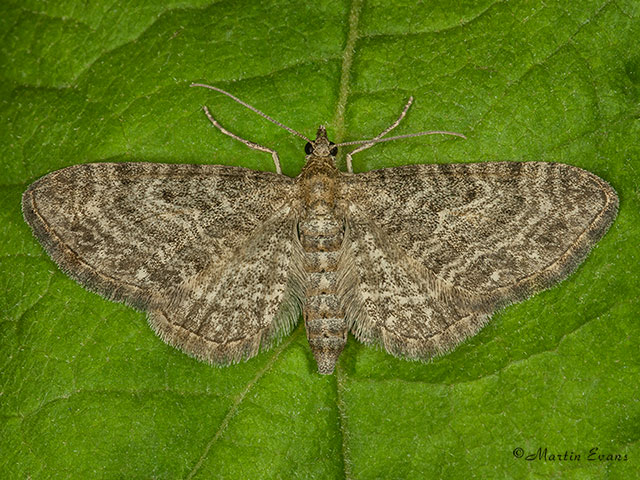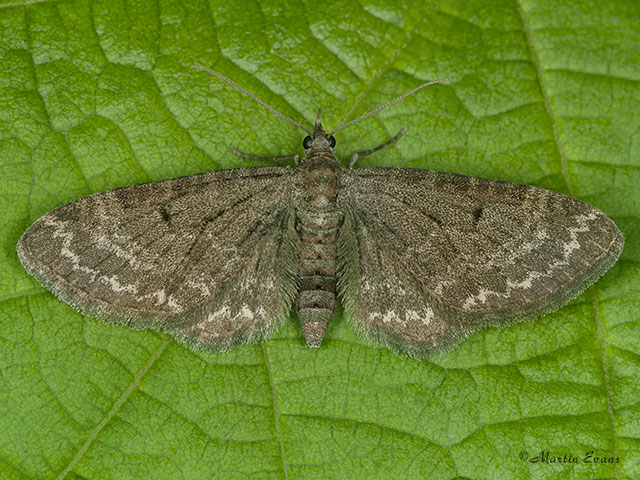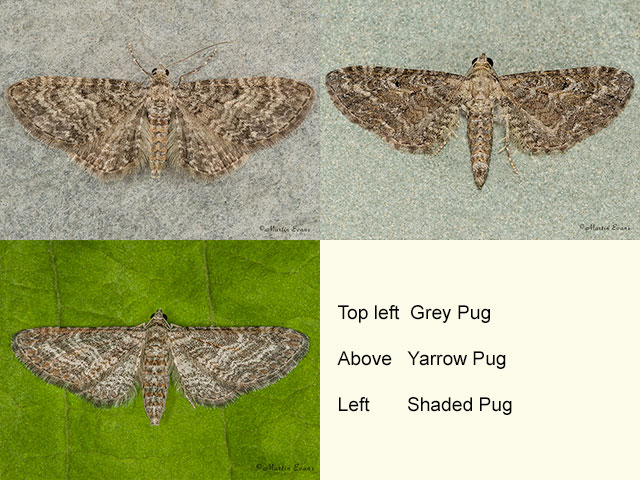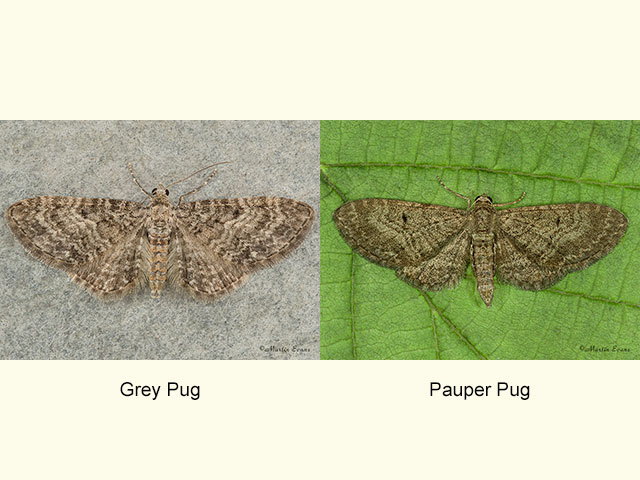Geometridae
70.190 Grey Pug Eupithecia subfuscata (Haworth, 1809)
Common
Similar species: Yarrow Pug Eupithecia millefoliata is larger (12 to 13mm) and has a straighter leading edge. It also has deeply indented crosslines each side of the forewing spot. Shaded Pug Eupithecia subumbrata has a whiter background colour on a narrower forewing with a straighter leading edge and a very small or absent forewing spot. Pauper Pug Eupithecia egenaria has a larger vertical dash in the centre of the forewing rather than a more rounded spot (melanic specimens of Grey Pug may have a dash) and the cross-lines are less clear and more diffused. In the case of worn specimens, melanic forms or if unsure of the identity check the genitalia. The highland form of Triple-spotted Pug Eupithecia trisignaria is also similar to darker or more poorly marked forms of Grey Pug. For these it may be necessary to check the genitalia.
Forewing: 10 to 12mm
Habitats: Woodland, scrub, hedgerows, downland, upland moorland, heathland, marshes, coastal cliffs, sand-dunes and gardens.
Habits: The moth comes to light.
Foodplant: The larva feeds on the flowers and leaves of sallows, Blackthorn, Hawthorn, Barberry, Aspen, Yarrow, Mugwort, ragworts, Goldenrod, Burnet-saxifrage, knapweeds, Betony and many other herbaceous plants. It pupates in the leaf litter or under bark.
